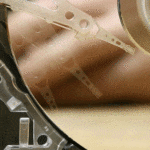 Data recovery from a faulty hard drive – Is it really possible?
Data recovery from a faulty hard drive – Is it really possible?
Data recovery is the process of extracting data from a faulty hard drive. Virtually any digital device has a hard drive or some sort data storage which could be a chip or a solid state disk (SSD). Hard disks can fail in different ways. Sometimes the failure happens without us doing anything wrong. This is the case when we drop a laptop or an external hard drive. Typically a faulty hard drive will show certain signs including beeping, clicking, buzzing or simply not spinning or powering on at all. If you did drop the laptop or the external hard drive, you should not turn on the hard drive under any circumstances as this will further damage the disk and make data recovery more difficult and more expensive.
What types of data recovery are there?
Depending on the nature of the hard disk failure, hard disk failure can be categorised as follows:
- Logical fault
- Physical fault
- Electronic fault
- Electro-mechanical failure
In logical data recovery, the file system and the data volume becomes corrupt. In this case, a data recovery technician has to correct the logical structure of the hard drive data volume and rebuild the file system. Logical fault is normally caused by power irregularities or interrupted power supply. In cases where physical fault is involved, the faulty hard drive has to be opened in the data recovery clean lab and examined to see if there are any scratches on the media by using a microscope or a special magnifier. Data recovery from physically faulty hard drives can be complex and quite often require read/write head swaps. Healthy read/writes are harvested from a healthy compatible disk and once the head swap has been completed, the temporarily repaired hard drive is cloned onto another healthy disk. Data recovery can then be conducted from the clone.
Data recovery from electronically faulty hard drives
Hard drives with electronic fault are those whose external or internal circuit boards have been damaged by power surge or by using incorrect power adapter. In such cases, data recovery involves repairing or replacing the electronic circuit board and reconstructing the corrupt data volume showing up as unallocated space in the computer disk management tools. If the circuit board is not repairable, the data recovery technician must find an identical disk donor so that he can use its electronic circuit. In such a case, the ROM module on the faulty electronic board must be copied and transferred to the the borrowed circuit board. As soon as the disk is operational, the data recovery specialist will clone the disk onto a brand new disk. Once the exact image of the repaired hard drive has been transferred to a new disk, then actual data recovery process begins. A final listing of the recovered data is generated and emailed to the client for review.

